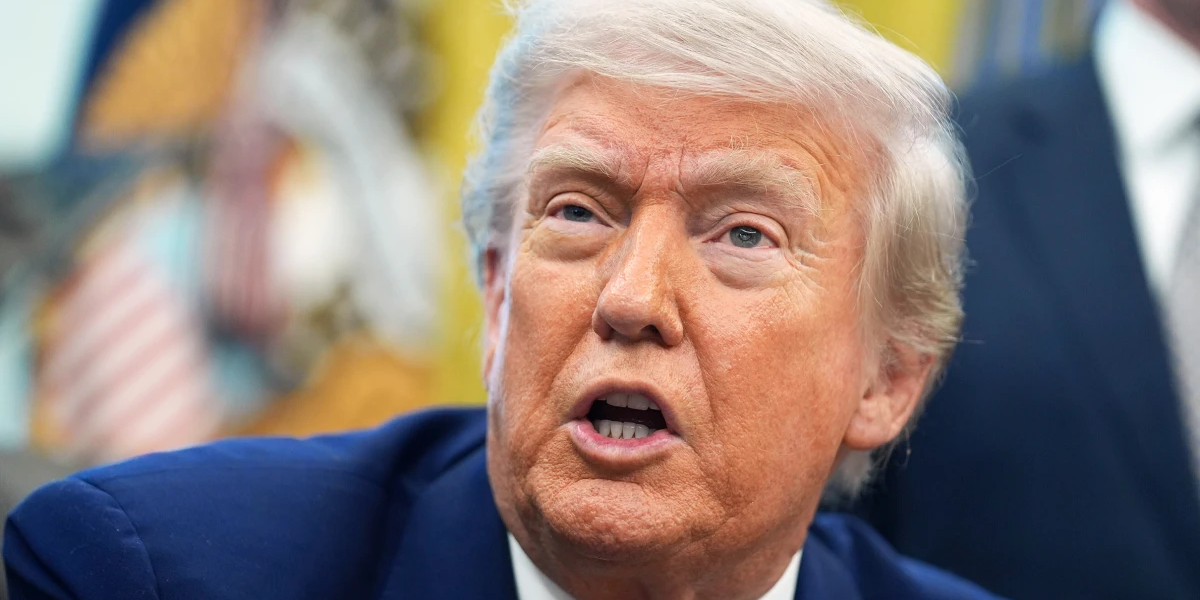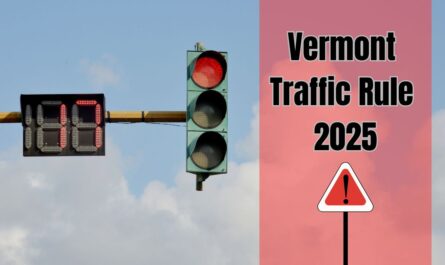President Donald Trump signed an order Wednesday that says people from a dozen countries, like Afghanistan, Haiti, and the Republic of Congo, are not allowed to come to the United States. This is a return to one of the most controversial policies he had during his first term.
Trump said that the new limits, which mostly affect Asian and African countries, were needed to protect the country and fight terrorism.
“As president, it is my job to look out for the safety and well-being of the people and the country of the United States.” “I am still committed to working with countries that are willing to do so in order to improve ways of sharing information and managing identities, as well as to deal with risks related to terrorism and public safety,” the proclamation said.
People from Afghanistan, Myanmar, Chad, the Republic of the Congo, Equatorial Guinea, Eritrea, Haiti, Iran, Libya, Somalia, Sudan, and Yemen will not be able to enter the United States.
It was said in Trump’s proclamation that some of the countries on the list regularly refused to let their citizens return or had “unacceptable” rates of visa overstays that showed “a blatant disregard for United States immigration laws.”
Others, like Sudan, Yemen, and Somalia, were put on the list because their screening and vetting procedures were not good enough, the statement said.
Seven more countries had some travel limits put in place. People from those countries could not enter the country through certain visa programs, but they were not completely banned. Burundi, Cuba, Laos, Sierra Leone, Togo, Turkmenistan, and Venezuela are those places.
Any legal permanent resident of the United States, people with Afghan Special Immigrant Visas, diplomatic visas, close family member immigrant visas, and visas “for ethnic and religious minorities in Iran” are not affected by the proclamation. It also made exceptions for people who had been adopted, people who were travelling on passports from countries that weren’t limited, and athletes or members of athletic teams who were going to the country for the Olympics or the World Cup.
Beginning Monday at 12:01 a.m. ET, there will be limits on movement.
The travel ban could make geopolitical tensions even worse. In the past few months, Trump has tried to change the United States’ role on the world stage by putting tariffs on dozens of countries, cutting aid to poorer countries, and forcing countries to take in immigrants he wants to deport while punishing those that don’t.
In a video released by the White House on Wednesday night, Trump said that the travel restrictions were “a key part of preventing major foreign terror attacks on American soil.”
He started the message by saying that the recent violence in Boulder, Colorado, where at least 12 protesters were hurt in what police called a racist attack, was proof that people should not be able to travel.
“The recent terrorist attack in Boulder, Colorado, made it clear how dangerous it is for our country when foreigners come here without being properly screened and when temporary visitors overstay their visas.” Trump said, “We don’t want them.”
Mohamed Sabry Soliman, the attacker suspect, is from Egypt. He came to the U.S. on a tourist visa before he asked for refuge. His vacation visa ran out while his asylum case was still being processed. Egypt is not on the list of places where people are not allowed to travel as of now.
According to Homeland Security Secretary Kristi Noem, Soliman’s family was detained by Immigration and Customs Enforcement on Tuesday and was being prepared to be sent back to their home country. After that, on Wednesday, a judge gave an order to stop Soliman’s wife and five children from being deported.
The countries that would be affected by the ban were chosen based on “the large-scale presence of terrorists, failure to cooperate on visa security, inability to verify travellers’ identities, inadequate record-keeping of criminal histories, and persistently high rates of illegal visa overstays,” according to Trump.
Alex Nowrasteh, vice president for economic and social policy studies at the Cato Institute, a nonpartisan and independent public policy research group, said that even though Trump said the new restrictions were because of concerns about terrorism, terrorist attacks by people from the 12 countries that will be completely banned are not common.
One terrorist from those countries, Emanuel Kidega Samson from Sudan, killed one person in an attack on US land in 2017. He did it out of hatred for white people. “From 1975 to the end of 2024, the chance of being killed by a terrorist from one of the banned countries was about 1 in 13.9 billion,” Nowrasteh wrote.
Trump’s 2017 travel ban, which he called one of his “most successful policies” Wednesday, is back. It was one of the most controversial policies of his first term.
During his first term, Trump also stopped people from six Muslim-majority countries from coming to the US, saying he was worried about terrorists. Even though Democrats were against the policy and there were several court challenges to it, the Supreme Court upheld it in the end. Chief Justice John Roberts made it clear that the president has the power to control immigration.
“Letting non-nationals into the United States “would be detrimental to the interests of the United States,” Roberts said at the time. This means that the president can decide not to let them in. Justice Sonia Sotomayor, on the other hand, wrote in her dissent that, based on the evidence, “a reasonable observer would conclude that the Proclamation was motivated by anti-Muslim animus.”
Iran, Libya, Somalia, and Yemen are the only places that both of Trump’s travel bans cover.
Those limits stayed in place until January 20, 2021, when President Biden, who had just been elected, signed a proclamation called “Ending Discriminatory Bans on Entry to the United States.”
Trump has said for years that he wants to limit immigration from Haiti and African countries, calling them “shithole” countries. In 2018, at a White House meeting about the visa lottery system, he made it clear that he would rather have people from Europe come to the US.
As soon as Trump became president for the second time, he reduced the number of refugees coming from almost all countries, such as Afghanistan, Sudan, the Republic of Congo, and Myanmar. But in May, he let 59 South Africans from the white racial group that ran South Africa during apartheid become refugees.
The Supreme Court agreed on Friday that the Trump administration could take away the temporary legal status that the Biden administration had given to more than 500,000 immigrants. This means that these people can be deported. People on release from Cuba, Haiti, Nicaragua, and Venezuela were there.
Due to bloodshed and political unrest on the island, the Trump administration cancelled an extension of Haiti’s Temporary Protected Status in February. This came after the Biden administration extended the status until 2026. It has also tried in the same way to end TPS for the millions of Venezuelans who came to the US with protection.


 by
by 

